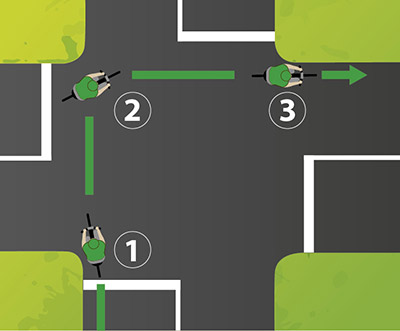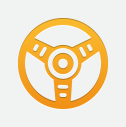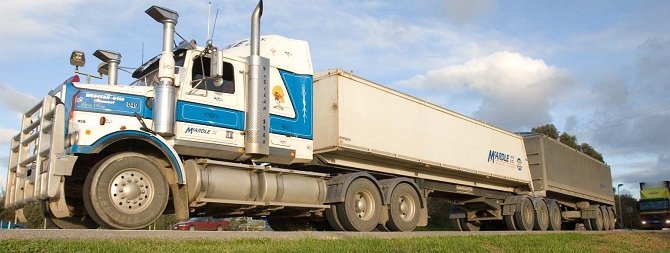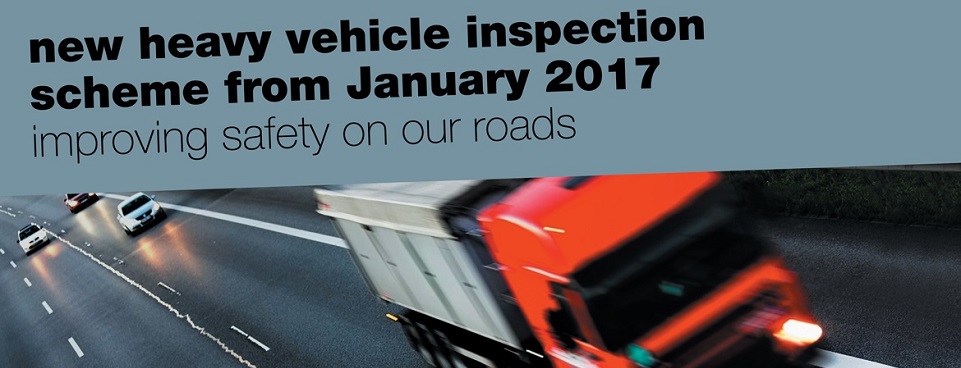The Driver's Handbook
Road rules for bicycle riders

Motor vehicle drivers also need to know the rules and responsibilities of bicycle riders.
 The South Australian Road Traffic Act including the Australian Road Rules define the rules and responsibilities of all road users, including bicycle riders. The following page outlines rules that apply to bicycle riders and includes other relevant road rules.
The South Australian Road Traffic Act including the Australian Road Rules define the rules and responsibilities of all road users, including bicycle riders. The following page outlines rules that apply to bicycle riders and includes other relevant road rules.
Bicycles are classified as vehicles and therefore bicycle riders have the same responsibilities, and must obey the same rules, as motor vehicle drivers. Remember:
- You can be charged with a traffic offence in the same way as a motor vehicle driver. This includes incurring demerit points against your driver’s licence if you hold one. If you do not hold a driver’s licence you will still incur demerit points which can prohibit you from obtaining a licence in the future
- Although the law gives you the same rights and responsibilities as other road users, other road users may not be aware of this
- You are more easily injured than motor vehicle occupants and it is therefore safer for you to be highly visible and look out for other road users when riding
- the law does not give anyone indisputable right of way, nor should you assume that another road user is going to give way
- Some people will judge all bicycle riders by your actions. If you disregard the road rules, you can undermine the goodwill of other road users.
Bicycle helmets
When riding, you must wear an approved bicycle helmet. The helmet should be properly adjusted and securely fastened.
South Australia has adopted new bicycle helmet standards. Helmets must comply with one of the following Australian or overseas standards:
| Standard | Helmet use |
|---|---|
| AS/NZS 2063:2020 | Bicycles and wheeled recreational devices (Australian standard) |
| AS/NZS 2063:2008 | Bicycles and wheeled recreational devices (Australian standard) |
| EN 1078:2012+A1:2012 | Pedal cyclists, skateboards and roller skates (European standard) |
| U.S. Consumer Product Safety Commission (16 C.F.R. Part 1203) | Bicycles (American standard) |
| ASTM F1447-18 | Recreational bicycles or roller skating (American standard) |
| Snell B-95, 1995 Bicycle Helmet Standard, 1998 revision | Bicycles (Snell standard) |
The standards appear on the helmet. Bicycle helmets should not be sold or offered unless they meet one of these standards.
Bicycle passengers must also wear a compliant helmet.
Riding at night and in hazardous weather
Riding when visibility is reduced such as at night or in hazardous weather conditions (heavy rain), you must have (either on you or on your bicycle):
- a flashing or steady white light that is clearly visible at least 200 metres from the front of the bicycle
- a flashing or steady red light that is clearly visible at least 200 metres from the rear of the bicycle
- a red rear reflector that is clearly visible for at least 50 metres from the rear of the bicycle when light is projected on to it by a vehicle headlight on low beam.
Keeping to the left
You must keep as close as reasonably practicable to the left side of the road except:
- when making, or about to make, a right turn
- where the road is divided into lanes
- when overtaking.
In deciding how close to the left side of the road or path is ‘reasonably practicable’, you should take into account factors such as obstacles in your path, lighting conditions at the time, and the quality of the riding surface.
Causing a hazard
You must not cause a traffic hazard (cause danger to yourself or others) by riding into the path of a driver or pedestrian.
For example, if you move out to pass a parked car or avoid an obstacle without checking behind for other road vehicles, you can cause danger to yourself or others. You should only move out to pass a parked car or avoid an obstacle when it is safe to do so.
‘No bicycles’ signs
You must not ride on a length of road or path to which a Road Access sign or a No Bicycles sign applies (see diagrams). These signs apply to all riders.

Road access sign.

No bicycles sign.
Hand signals
You must give a hand signal when preparing to turn right, diverge right or when changing lanes to the right. However, when undertaking a hook turn, you do not need to give a hand signal (see Hook turns below).
Riding and seating position
When riding, you must face forward and be in a seat designed for travelling on a bicycle. You must not ride the bicycle seated in any other position, e.g. on the handlebars or the crossbar.
Carrying passengers
You must not carry more passengers than the bicycle is designed or equipped to carry. Most bicycles are designed to carry only the rider, however there are exceptions including child carrier seats, tandems and bicycle trailers. Extra persons are not to be carried unless they are in a seat designed for a passenger.
Riding without hands on the handlebars
You must always have at least one hand on the handlebars and have proper control of the bicycle.
Holding onto a moving vehicle
You must not be towed or hold on to a moving vehicle, including another bicycle rider.
Leading an animal
You must not lead (on a leash or any other leading device) an animal from a vehicle, including a bicycle.
Slip streaming or pacing
You must not ride within two metres of the back of a moving motor vehicle for more than 200 metres.
Speed limits
Bicycle riders must obey the same speed limits as drivers of motor vehicles.
Alcohol
No person can drink alcohol without affecting their ability to drive a vehicle, or ride a motorcycle or bicycle. It is also an offence to ride a bicycle 'under the influence' (DUI).
Warning device
Every bicycle must have within easy reach a functioning warning device, such as a bell or horn.
Bicycle lanes
Bicycle lanes are for the exclusive use of bicycle riders. These lanes are indicated by bicycle lane signs or by road markings comprising both a white bicycle symbol and the word "lane" painted in white. The lanes operate during the times indicated. If no times are stated, they operate at all times.
Green bicycle lanes are installed at intersections where there is a higher potential for conflict between motor vehicles and bicycles. They clearly highlight the boundaries of a bicycle lane and the road.
If you are riding on a road with a bicycle lane, you must if practicable, ride in the bicycle lane. You may move out of the bicycle lane to avoid debris, potholes, or to safely overtake another bicycle rider. You must only ride in the correct direction in the bicycle lane.
Where there is insufficient room for two riders to ride abreast in a bicycle lane, as a courtesy you should try and ride in single file. During the bicycle lane operating times, you must not ride outside a bicycle lane abreast of another rider unless you are overtaking.
Other road users are permitted to use a bicycle lane only when:
- the bicycle lane is not in operation
- stopping in an emergency
- entering or leaving the road from private property, a parking area, including a parking lane, or
another road (and then only for up to 50 metres) - overtaking a vehicle turning right or making a U-turn (and then only for up to 50 metres)
- avoiding an obstruction (and then only for up to 50 metres)
- driving a bus or taxi picking up or dropping off passengers (and then only for up to 50 metres).

Bicycle Lane sign
Bicycle storage areas (Bicycle boxes)
A bicycle storage area is a safety feature at an intersection with traffic lights to allow bicycle riders to be more visible to drivers. It is represented on the road with a white bicycle symbol and the area may be painted green.

- At a red traffic signal, bicycle riders wanting to turn left or go straight must keep to the left of the bicycle storage area (bike box).
- Bicycle riders wanting to turn right must keep to the right of the bicycle storage area (bike box).
When entering a bicycle storage area, a bicycle rider must give way:
- to any vehicle that is in the area
- if the area is before any green or yellow traffic lights, any vehicle that is entering or about to enter the area, unless the motor vehicle is turning in a direction that is subject to a red traffic arrow
- if the area forms part of a lane to which traffic arrows apply, any vehicle that is entering or about to enter the area at a time when those arrows are green or yellow.

A bicycle rider must give way to all vehicles and not enter a bike storage area if the traffic lights are green.
Giving way to buses
All vehicles in the left lane (including a bicycle lane) must give way to any bus displaying a Give Way to Buses sign and is indicating its intention to rejoin the traffic flow.

Give Way to Buses sign
Bus lanes
You are permitted to ride in bus lanes; however you should not obstruct a bus using the lane and ride as close as reasonably practicable to the left side.

Bus lane sign
Bus only lane
You are not permitted to ride in a Bus Only Lane. These lanes are usually coloured red and in South Australia most have a bicycle lane adjacent for bicycle riders to ride in.
When there is a separate signal for buses (a white ‘B’ light) at an intersection, you must allow the bus to proceed on that signal. It is illegal for any other vehicle, including a bicycle, to proceed on the white ‘B’ signal.

Bus only lane sign
Roundabouts
Like all motorists entering a roundabout, bicycle riders must give way to vehicles already on the roundabout and should look out for vehicles approaching the roundabout from the right. You may turn right from either lane of a multi-lane roundabout. However, if you are riding in the far left lane, you must give way to any vehicle leaving the roundabout.
Bicycle riders in the far left lane of a multi lane roundabout must give way to any vehicle leaving the roundabout.
Riding abreast
You may ride beside another bicycle rider on a road but must not ride more than 1.5 metres apart. Three or more bicycle riders must not ride beside each other, although you are permitted to overtake other bicycle riders that are riding beside each other. You must not ride outside a bicycle lane abreast of another rider in a bicycle lane unless
you are overtaking (see Bicycle Lanes).
Passing (overtaking) vehicles on the left
Whether you are riding in a marked bicycle lane or sharing a lane with a vehicle, a bicycle rider must not pass or overtake on the left of any vehicle that is giving a left change of direction signal and is turning left. A bicycle rider may pass or overtake a vehicle on the left when the vehicle is giving a left change of direction signal and is stationary or moving forward to turn left. Once the vehicle begins turning left the rider must not ride past or overtake the vehicle on the left.
A driver turning left through a break in a dividing strip must give way to any bicycle rider travelling in the bicycle lane. A dividing strip is a painted area or a raised structure, located between intersections, separating the bicycle lane from a marked lane. Drivers must not overtake a bicycle rider and then turn left in front of the bicycle rider’s path without due care and consideration to the movement and safety of the bicycle rider.
Pedestrian and Children’s crossings
There are special rules that apply at children’s crossings (i.e. crossings with red and white posts and orange flags or flashing lights). All road users (including bicycle riders) must give way to pedestrians on children’s crossings. You must not overtake another vehicle that has stopped at a crossing to give way to pedestrians, either to the right or left of that vehicle. You must remain stationary if any pedestrian is on or entering the crossing.
Bicycle crossing lights
Bicycle crossings have been installed to assist bicycle riders to cross busy roads – the same way in which pedestrian lights assist pedestrians. If you are approaching or at bicycle crossing lights, you must obey the lights and only proceed when the traffic or bicycle light is green.

Hook turns
When turning right at an intersection, you have the option of making a hook turn (from the left lane), rather than making a normal right turn. A hook turn may be more convenient on some roads, such as those with heavy traffic. When making a hook turn, you must obey all traffic laws such as only proceeding on a green light and giving way to other traffic.
When making a hook turn you must complete the following steps
(see diagram below):
1. Approach and enter the intersection from the left side.
2. Move forward and wait on the opposite left corner.
3. Then proceed onto the road to which the right turn was to be made.

How to make a hook turn
Rules for paths
This section explains the different types of ‘off-road’ paths available to bicycle riders and some associated rules bicycle riders must follow when using them.
When riding on any path you must:
- exercise due care and consideration for pedestrians and other users
- give warning to pedestrians or other path users by sounding your bell or horn or by other means, if necessary for the purpose of averting danger
- keep to the left of any oncoming bicycle rider
- wear an approved bicycle helmet that is properly secured and fastened.
When riding on footpaths or shared paths you must:
- keep to the left of the path unless it is impracticable to do so
- give way to any pedestrians.
Footpaths
Bicycle riders are allowed to ride on a footpath unless a No Bicycles sign is displayed.
Bicycle paths
A bicycle path is for the exclusive use of bicycle riders and is identified by signs and path markings.

Bicycle path sign
Shared paths
There are an increasing number of paths that can be used by bicycle riders. In most cases, these are shared paths with pedestrians. These paths are identified by signs.

Shared path sign
Separated paths
A separated path is divided into sections, one of which is designated for the exclusive use of bicycle riders and the other for pedestrians. These paths are identified by signs and path markings and you must not ride along the part of the path designated for pedestrians.

Separated path sign
Parks and private property
Some parks do not allow bicycle riding within their grounds. If you are unsure about bicycle access, you should contact the Department of Environment, Water and Natural Resources, or the appropriate local council or land owner for advice.
































